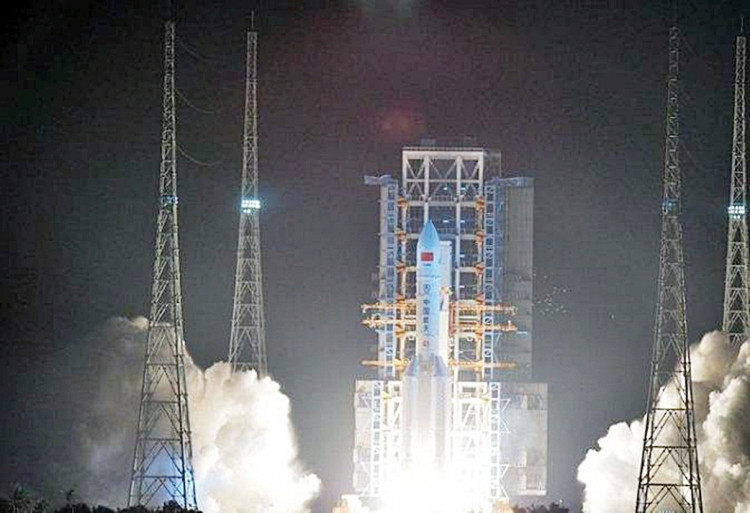China's Tianwen-1 mission to Mars launched successfully from Hainan Island on Thursday, putting China on track for its first landing on the Red Planet in May 2021.
A massive Long March-5 Y4 rocket, China's largest launch vehicle, blasted off from the Wenchang Space Launch Center carrying a robotic spacecraft containing an orbiter, a lander and a rover. State-owned China Aerospace Science and Technology Corporation declared a successful launch. It said the spacecraft was successfully transferred to the predetermined Earth-Mars transfer orbit.
The objectives of the Tianwen-1 mission are to search for evidence of both current and past life on Mars, and to assess the planet's environment.
The spacecraft will enter Mars orbit after a seven month-long journey. The solar-powered mission rover, which will land on Mars, is stowed inside an entry vehicle atop the orbiter.
It will remain attached to the orbiter in Mars orbit for some three months before the landing attempt. The Tianwen-1 mission is the first step in China's planetary exploration program.
The Tianwen-1 orbiter carries 12 payloads, seven of them science payloads. It will carry a high-resolution camera comparable to HiRise aboard NASA's Mars Reconnaissance Orbiter. It will operate for one Mars year (687 Earth days).
The spacecraft will also relay messages from the rover, which weighs 240 kg. The rover will attempt to land in a southern part of Utopia Planitia, where it will hopefully survive for 90 Mars days.
The rover will carry ground-penetrating radar, a multispectral camera and a Laser Induced Breakdown Spectroscopy instrument.
The rover will map the geological structure of Marsand investigate the characteristics of its soil and water-ice distribution. It will also study the surface material composition and the environment on the Red Planet.
"Testing for all the technical items on the rocket, the Mars rover and the launching area has been completed so far," said Li Benqi, command member for the Long March-5 launch mission last week when the Long March 5 was rolled out at Wenchang.
The Tianwen-1 mission follows by only four days the first mission to Mars by an Arab country. The Emirates Mars Mission carying the Hope (Al-Amal in Arabic) orbiter launched Sunday from Japan's Tanageshima Space Center, operated by the Japan Aerospace Exploration Agency (JAXA).
The Hope Mars Mission will study Mars' daily and seasonal weather cycles and weather events in the lower atmosphere such as dust storms. It will also study how weather varies in different regions of Mars.
Al-Amal will attempt to answer the scientific questions as to why Mars' atmosphere is losing hydrogen and oxygen into space and the reasons behind drastic climate changes of Mars.






